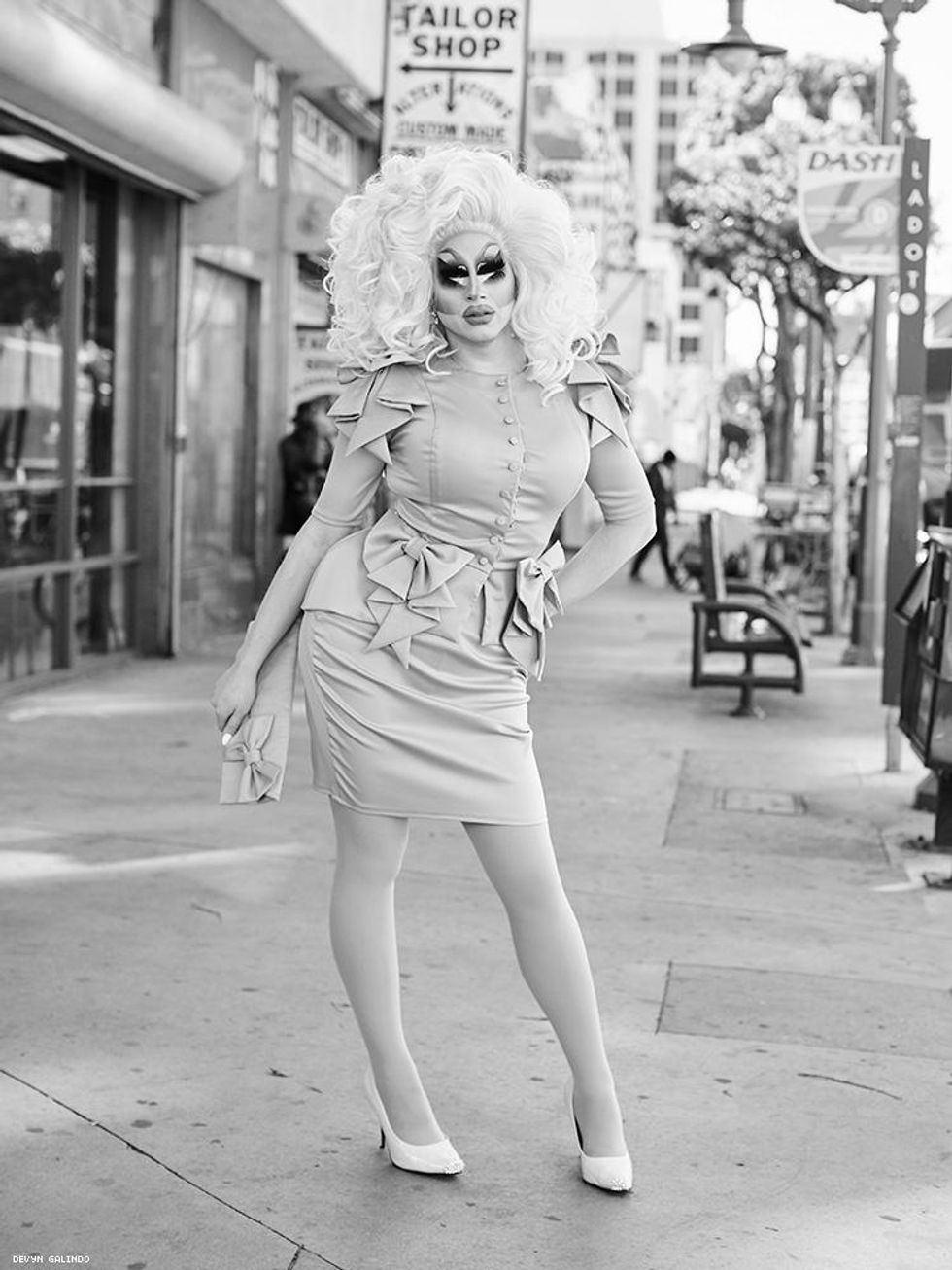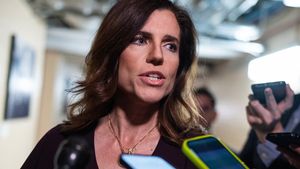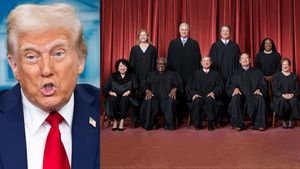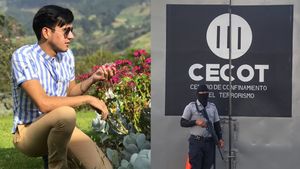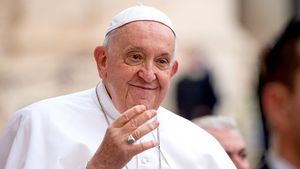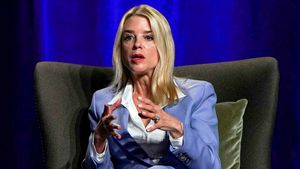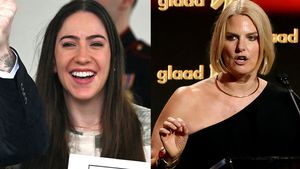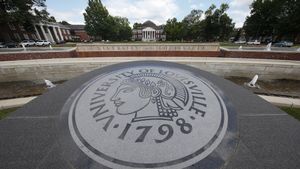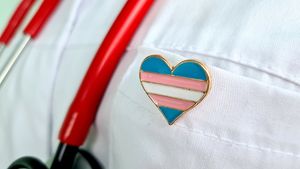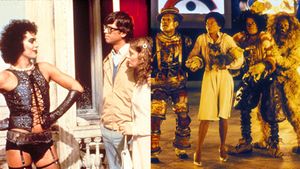On the morning of March 16, a crush of people (including a few celebrities) crowded Hollywood Boulevard for the uncovering of a new star on the Walk of Fame. There, on an elevated stage, the event's host announced that the assemblage comprised "one of our most enthusiastic crowds in a long time." The honoree: RuPaul Andre Charles, the first drag performer to be canonized in this way.
"I look down and I see the star that's going ... into this Walk of Fame, but I think it should be at least three sizes bigger than any other star," Jane Fonda said in her tribute to RuPaul at the event. "I don't think anyone else on the Walk of Fame has ever launched an industry like RuPaul has. He created an industry that has given hundreds and hundreds of jobs and dreams to so many." Fonda was right: In addition to being recognized for his own singular accomplishments, appearing in more than 50 films and music videos since the '90s and fashioning himself into "the most successful drag queen of all time," Charles was being honored for the platform he created for drag at large.
RuPaul has pushed a generation of queens into the global mainstream in unprecedented ways. In the year to follow, Courtney Act (whose own rise to celebrity began when she appeared on Australian Idol) would host the United Kingdom's first dating show focused on the bisexual community; Shangela and Willam would make appearances in one of the most-talked about films of the year, A Star Is Born, alongside Lady Gaga and Bradley Cooper; Ginger Minj would fill a role in Jennifer Aniston's Dumplin'; and Valentina would be cast for Rent: Live! All are, in part, children in a house that Mama Ru built, passing through the workrooms of his namesake show, RuPaul's Drag Race. Jointly, they constitute a potential change in Hollywood's -- and America's -- relationship with the art of drag and the people who practice it.
"People seem to be detecting a 'new' trend of drag queens in Hollywood," Trixie Mattel, Drag Race season seven alum and All Stars season three winner, says. "But if you consider movies [and characters] like Madea and White Chicks, drag has always been around but no one was calling it drag." And while a case can be made to consider drag a catchall term for any cross-dressing on screen, it is worth examining the presence of actual, working drag queens in major productions.

"Hollywood likes to use drag more as a narrative device," Joe E. Jeffreys, a drag historian, videographer, and professor at New York University says. "There's always a situation where there's some life-threatening or life-changing dilemma that the character can only get over by [putting on] a dress."
Case in point: Mrs. Doubtfire in 1993, Tootsie in 1982, and Some Like It Hot in 1959, when Tony Curtis and Jack Lemmon starred alongside Marilyn Monroe. In these films, men cross-dress for specific, generally comedic reasons (to see their children, to skip town, to save their lives) in order to advance the plot, as opposed to showcasing the actual art form. Projects like To Wong Foo, Thanks for Everything! Julie Newmar and The Adventures of Priscilla, Queen of the Desert that show drag queens as fully realized characters are rare. And even then, the most prominent roles cast cisgender, heterosexual men to dawn drag.
Before RuPaul, Divine -- she of the mermaid dress and comically drawn eyebrows -- was the most notable drag queen in Hollywood. "She really had a film presence from day one," Jeffreys says. Much of that work was underground working with John Waters on his experimental films like Roman Candles, as well as his independent work like the cult classic Pink Flamingos, which brought Divine widespread notoriety. But it was her turn as Edna Turnblad in the 1988 film Hairspray that saw her officially break into the mainstream. As a drag queen, Divine landed something of an unexpected role: a cisgender, heterosexual woman. She was so integral to the film that the Broadway adaptation of the work requires the role of Edna Turnblad to be played by someone in drag. (It's important to note that actual drag queens are not generally cast.) Her presence also left an indelible mark on pop culture at large -- Divine was used as a major visual inspiration for Ursula the sea witch in The
Little Mermaid.
Of course, Divine was neither the first nor the only, even in those days. Behind the screen, Miss Flawless Sabrina worked in Hollywood after the release of The Queen, an independent documentary about the 1967 Miss All-American Camp Pageant that she starred in and was screened at the Cannes International Film Festival. In 1968, Kim August appeared in drag in No Way To Treat a Lady, as a victim to a serial killer. In 1990, International Chrysis appeared in the American crime film Q&A, released a month after her death. Jeffreys also notes that, in the 1972 Liza Minnelli film Cabaret, a drag queen makes an appearance in the chorus line of the Kit Kat Club. But RuPaul's golden era has been unprecedented not only in prominence, but also in the way that it has highlighted actual drag queens as viable assets for major productions.
COVER | Hari Nef Tommy Dorfman Are Living the Rom Com of Our Dreams
"What's really happening right now, in part, is because of Drag Race," Jeffreys explains, acknowledging that over the span of 10 seasons, the series has built the ability to independently mint its own celebrities. "Studios are casting these queens in a novelty cameo that lends some edge or hipness to the film." The idea bears out, finding root in how Ru herself got her start making appearances in Crooklyn, To Wong Foo, and The Brady Bunch Movie in the early '90s after stamping her own level of celebrity through her music and a MAC Cosmetics campaign.
Though multiple queens are being cast in unprecedented numbers for major Hollywood productions, the vast majority of these opportunities consist of only a few minutes on screen with limited lines. They are more cameo roles than a proper part of the cast -- recalling the same options queer characters have long been used to; fabulous accessories to the main characters, bringing them support by way of a makeover or encouragement. In A Star Is Born, Willam and Shangela do exactly that, not only providing Lady Gaga's character, Ally, with the platform she needs to get noticed, but also chiming in for encouragement via video chat during her rise to fame. In Dumplin', Ginger Minj, Drag Race season seven alum, continues that work, turning a high school student into a standout performer for her local beauty pageant. In the same film, though, it was Rhea Ranged who emerged as the most complex drag queen in any mainstream film this year. Predictably, she is portrayed not by an actual queen, but by the cisgender, hetrosexual actor Harold Perrineau.

Truly dimensional characters may remain elusive for working queens, but these smaller parts are still hopeful opportunities. When cast in these roles, some stars end up performing, in part, as consultants. After meeting with the director and writers of Dumplin' during the audition process, Minj's role was expanded, and the team started asking for her input. "Anne Fletch, the director, took me aside my first day on set and said, 'I wanted to cast you and some authentic drag queens so you could keep us honest,'" Minj reveals. "She was essentially saying 'this is your world and we want to tell your story, so call us out when we aren't doing something correctly.'" Her inclusion resulted in small tweaks, like the positioning and staging of the queens, that lent an air of authenticity to the film. But it still relegated Minj, an actual drag queen, to a more background role.
Some Drag Race alumni are proving that they deserve center stage. In 2018, Alyssa Edwards debuted her very own reality show on Netflix called Dancing Queen, which chronicles her exploits as the owner of a dance studio called Beyond Belief in her hometown of Mesquite, Texas. Courtney Act is the host and face of the reality competition The Bi Life, the UK's first-ever bisexual dating show. Viceland picked up The Trixie and Katya Show, starring Trixie Mattel and Katya Zamolodchikova, based off their YouTube show UNHhhh, adding the pair to their lineup on HBO.
And, of course, Bianca Del Rio has been making inroads as a stand-up comedian and actor since she took the crown on season six of Drag Race. She starred in Matt Kugelman's independent comedy, Hurricane Bianca, which featured (amongst others) Ru, Edwards, Shangela, and Willam, and was, in part, the product of crowdfunding. The sequel later got buy-in from Netflix. But what about projects that originate within the industry? Late last year, Valentina was cast as Angel in Fox's Rent: Live! which may be the most promising drag role of 2018. Angel was originally written as a drag performer and contains much more substance than any other contemporary example written at that level of production.
"I'm hoping this is not a trend, but a door opening," Jinkx Monsoon, Drag Race season five winner, says. Like Minj, Monsoon discovered drag through theater. "We are not 'drag queen actors,' we are actors who do drag. I'm hoping as we continue to be given these opportunities, the roles Hollywood writes for queens will become more and more multi-dimensional." For Minj, who has always held a close connection with Divine's trajectory, the recreation of the star's legacy is inevitable.
"I definitely think there will be another Divine and I think I'm going to be that," Minj says. "We are at the point where a lot of people think it's new and a fad or a joke and we just have to prove them wrong; we have to prove we're serious and talented and just as worthy of being movie stars as
anyone else."
To read more, grab your own copy of Out's February issue featuring Hari Nef and and Tommy Dorfman as the cover on Kindle, Nook and Zinio today, and on newsstands January 22. Preview more of the issue here. Get a year's subscription for $19.95.
